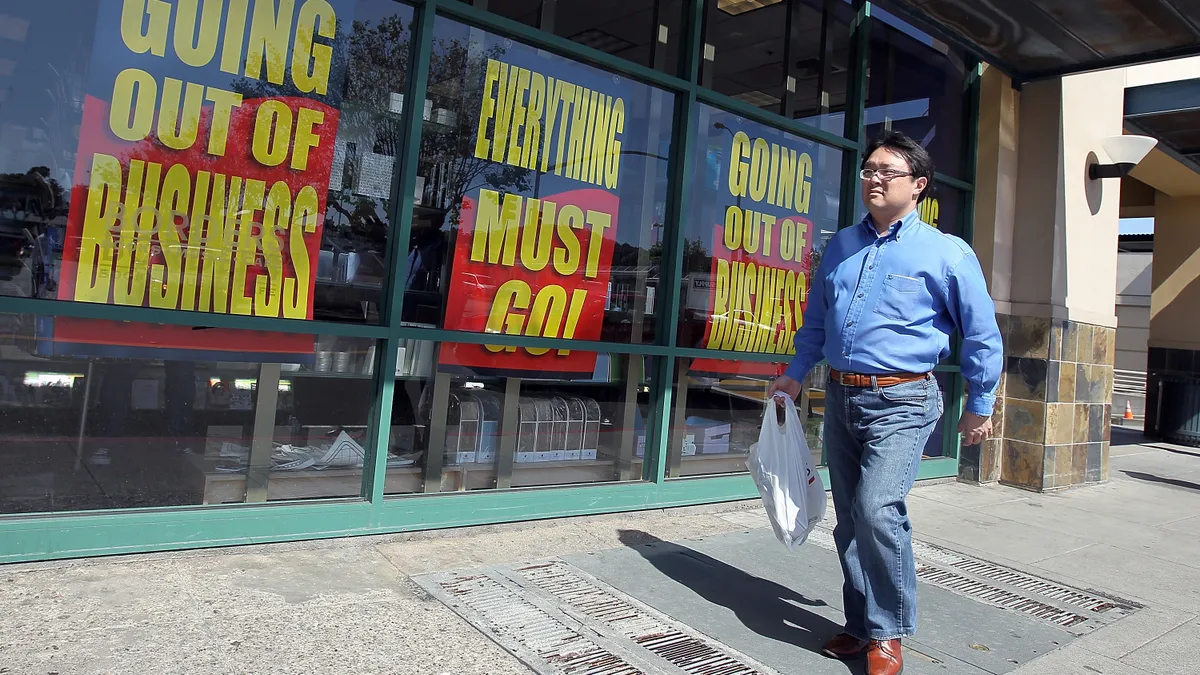Dive Brief:
- With brick and mortar retail bankruptcies increasing, suppliers are growing alarmed at the possibility of going unpaid should another Chapter 11 filing occur, Bloomberg reported last week.
- Suppliers are particularly vulnerable to buyer bankruptcies as they fall low on the payment chain, below secured creditors. To make matters worse, supplier insurance firms have reduced their services as risk runs higher. Bloomberg notes Sears vendors are no longer eligible for short-term financing, or factoring.
- As a result, suppliers are preempting problems by demanding payment terms as tight as a week. Yet, the relationship aspect of the business complicates matters by introducing a "painful cycle:" if a supplier refuses to stock a retailer's shelves, it may accelerate lost sales and an eventual bankruptcy.
Dive Insight:
Retail suppliers are stuck between a rock and a hard place as they can neither afford to accept mounting debt due to missed payments from their buyers, nor to cut off a relationship with a years- or decades-long partner. Such is the difficulty of dependency and relationship businesses; but trust and faith can only go so far.
Payless ShoeSource provides just the kind of example suppliers are rejecting. In March, a month prior to its Chapter 11 filing, various suppliers contacted Footwear News to share the news that Payless was months behind on its bills, forcing some suppliers to not only cut shipments but also lay off members of their own staff. Other suppliers reportedly continued to extend credit to the retailer after Payless threatened to cut off future business if they did not. Meanwhile, supplier attempts to discuss the matter with the retailer supposedly went unacknowledged, adding to industry frustration.
Such situations often lead to long memories on the part of those who get burned and may complicate future relations throughout the industry. In addition to Payless, Sears and Sports Authority have reportedly suffered from similar disputes with suppliers.
There appears to be no good alternative for the retail supplier, except to turn the tables and keep their vendors on a leash when it comes to payments, or diversify their business. Yet, transitioning from one buyer to another is easier said than done, particularly when the industry as a whole is facing disruption.
An added challenge for suppliers is their lack of direct access to the consumer base that purchases their product. Many apparel suppliers are based in Asia, and rely on U.S. retailers to access the Western market. An alternative could be for manufacturers to begin direct-to-consumer sales, but the option suffers from the limitations of cross-border e-commerce and reduced scale.
The future remains uncertain, but past lessons are clear for retail suppliers: a new age of risk has arrived, requiring a different approach to the terms of business.














